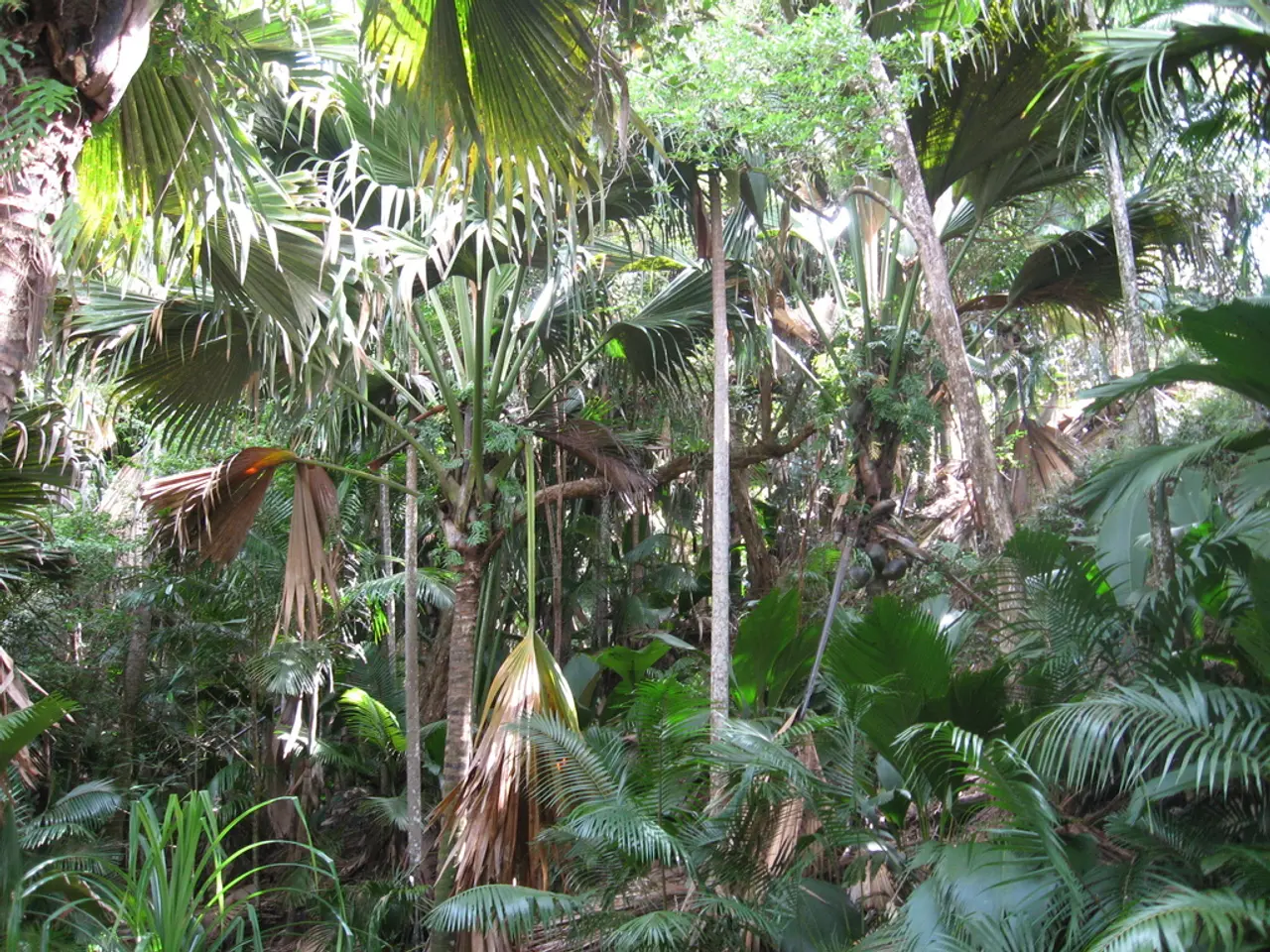Woodland Communication Claim is Misleading: Trees Do Not Engage in Discussions for Mutual Aid!
In the heart of our forests, a world of complexity and intrigue unfolds. This article aims to shed light on the fascinating interactions between trees, debunking common misconceptions and offering a fresh perspective on our arboreal neighbours.
Contrary to popular belief, trees do not typically engage in group selection, where cooperative groups outcompete non-cooperative ones. Instead, the forest floor is a competitive arena, with mature trees producing millions of seeds, yet on average, only one will reach the top.
After the last ice age, different tree species migrated north at varying rates and in diverse ways. This diversity is still present today, with trees living in combinations unlike any in the past or future.
Trees communicate with each other through a network of fungi called arbuscular mycorrhiza. These fungi facilitate carbon transfer between trees and ensure a steady supply of nutrients by colonizing multiple host plants. However, the notion that mycorrhiza represents 'parasitism' rather than 'cooperation' is more commonly held.
Researchers suggest that trees deliberately and altruistically send nutrients to other trees to help them grow and maintain the health of the forest. This altruistic behaviour can evolve if there is a likelihood of reciprocity from the recipient. However, it's important to note that forests do not behave like a single organism, and trees sometimes help each other grow, but not always.
Plants, including trees, are silent, rooted, and mysterious. They have distinct, complex bodies, engaging in intricate interactions, and exhibiting inscrutable behaviours. It's crucial to learn to respect these different organisms and understand them in their own terms, rather than treating them as mere 'objects' or 'things'.
Plants can produce allelochemicals that poison neighbouring plants, and they produce hormones and defence signals that other plants detect and adjust their physiology to. This suggests a level of communication and interaction that goes beyond simple competition.
However, it's essential to approach these findings with caution. Claiming that trees or forests have human qualities and emotions can lead to imaginary conclusions. An ecosystem is a complex system with various positive and negative interactions that constantly change.
Increasing evidence shows that nutrient sharing through mycorrhizal fungi benefits kin more than unrelated plants. This implies that altruistic behaviour can evolve if it benefits kin who carry the genes responsible for it and pass them on to future generations.
Recent studies have sparked debate about the extent of cooperation among trees. Suzanne Simard, a renowned scientist, has been criticized by some for potentially oversimplifying complex forest ecosystems and conservation efforts. Her work, including her book 'Finding the Mother Tree,' has been subject to scrutiny, highlighting the need for continued research and a nuanced understanding of forest dynamics.
In conclusion, the world of trees and forests is far more complex than we often realise. By appreciating their intricacies and respecting their unique characteristics, we can better understand and protect these vital ecosystems.





